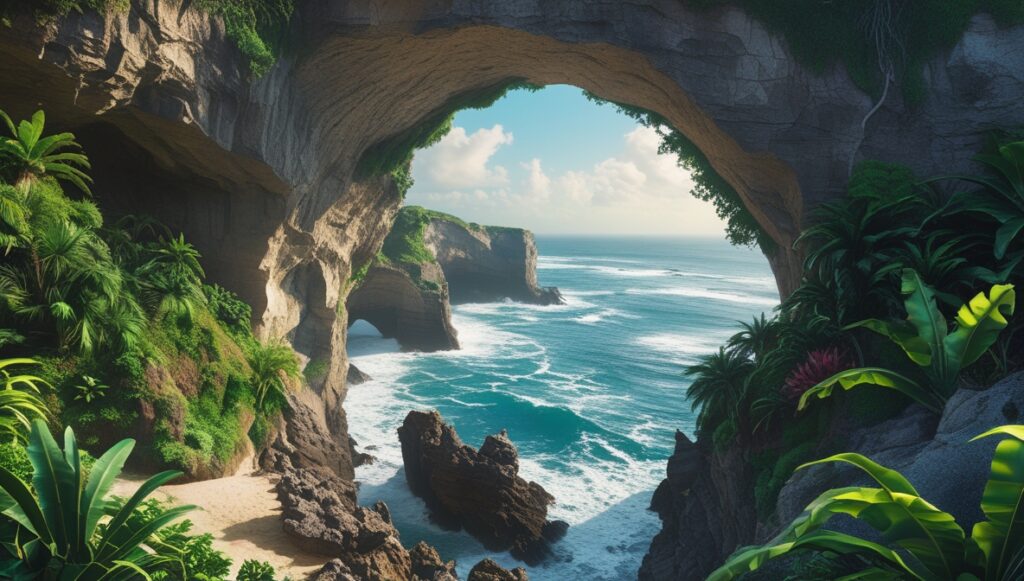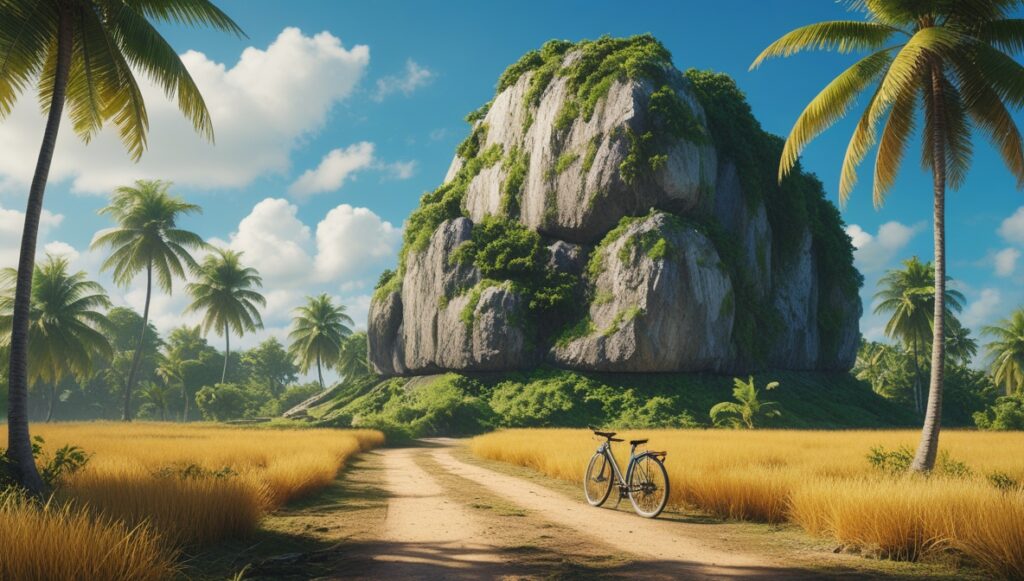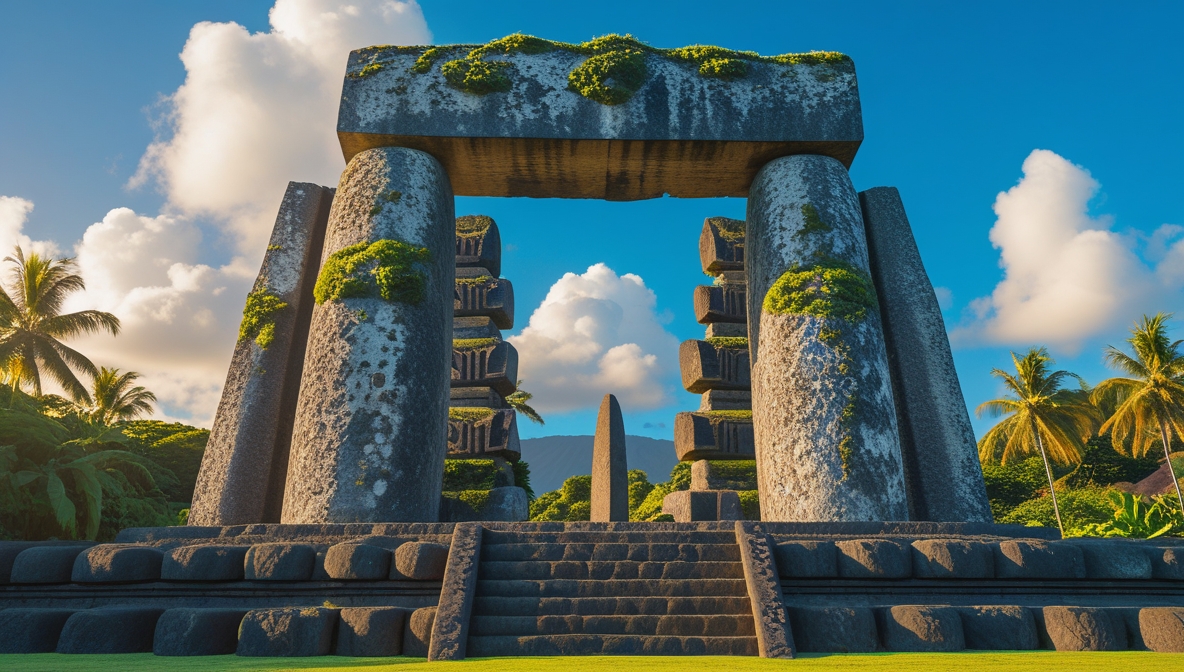Overview
Nestled on the eastern coast of Tongatapu, Tonga’s main island, Haʻamonga ʻa Maui stands as a testament to the rich history and architectural prowess of the Tongan people. Often referred to as the “Stonehenge of the Pacific,” this ancient trilithon, constructed in the 13th century by King Tuʻitātui, serves as a gateway to understanding Tonga’s royal heritage and astronomical knowledge. Beyond the monument itself, the surrounding region offers a blend of natural beauty, cultural experiences, and historical sites waiting to be explored.


Quick Facts
-
Location: Niutōua, Heketā, Tongatapu, Tonga
-
Constructed: Circa 1200 AD by King Tuʻitātui
-
Structure Dimensions: Height: 5.2 meters; Width: 1.4 meters; Length: 5.8 meters
-
Materials Used: Coral limestone
-
Significance: Believed to have astronomical alignments and served as a royal gateway
Budget Breakdown
| Expense Category | Cost (TOP) | Cost (USD) |
|---|---|---|
| Accommodation | 100 | 45 |
| Meals | 50 | 22 |
| Transportation | 30 | 13 |
| Entrance Fees & Tours | 20 | 9 |
| Miscellaneous | 20 | 9 |
| Total per Day | 220 | 98 |
Note: The above estimates are approximate and can vary based on personal preferences and seasonal changes.
Flights
Travelers can reach Tongatapu’s Fuaʻamotu International Airport (TBU) via direct flights from several international destinations, including Auckland, Sydney, and Nadi. From the airport, Haʻamonga ʻa Maui is approximately a 30-minute drive. Local taxis and rental cars are available for transportation.
Safety
Tonga is generally considered safe for tourists. However, it’s advisable to:
-
Respect local customs and traditions.
-
Stay aware of weather conditions, especially during the cyclone season (November to April).
-
Use reliable transportation services.
Climate
Tonga experiences a tropical climate with two main seasons:
-
Dry Season: May to October, characterized by cooler temperatures and lower humidity.
-
Wet Season: November to April, with higher temperatures, humidity, and increased rainfall.
Best Things to Do in Haʻamonga ʻa Maui and Surroundings
-
Explore Haʻamonga ʻa Maui:
Delve into the history and legends surrounding this ancient trilithon. The monument’s construction and purpose offer insights into Tonga’s royal past and architectural prowess.
-
Visit Maka Fa’akinanga:
Located nearby, this stone throne is believed to have been used by ancient Tongan kings as a lookout and resting place, symbolizing royal authority and protection.
-
Stroll Through Local Villages:
Engage with the friendly locals of Niutōua and experience traditional Tongan hospitality, crafts, and cuisine.
-
Enjoy Coastal Scenery:
The eastern coast of Tongatapu offers picturesque views of the Pacific Ocean, with opportunities for photography and relaxation.
-
Attend Cultural Performances:
Experience traditional Tongan dance and music performances that showcase the rich cultural tapestry of the islands.
Haʻamonga ʻa Maui Travel Guide
-
Transportation: Renting a car is a convenient way to explore Tongatapu at your own pace. Alternatively, guided tours are available for those interested in in-depth historical insights.
-
Accommodation: A range of lodging options, from budget guesthouses to mid-range hotels, are available in Nukuʻalofa, the capital city, which is about a 30-minute drive from Haʻamonga ʻa Maui.
-
Local Etiquette: Dressing modestly and seeking permission before taking photographs of locals are appreciated gestures that reflect respect for Tongan customs.
Top Attractions in Haʻamonga ʻa Maui
-
Haʻamonga ʻa Maui Trilithon:
The primary attraction, this stone structure continues to intrigue historians and visitors alike with its mysterious origins and purposes.
-
Maka Fa’akinanga Stone Throne:
A significant historical site offering insights into the royal practices of ancient Tonga.
-
Ancient Royal Tombs (Langi):
Scattered around the area, these tombs are resting places of former Tongan kings and are constructed using impressive stonework.
Places to Visit in Haʻamonga ʻa Maui
-
Anahulu Cave:
A limestone cave system featuring freshwater pools, perfect for a refreshing swim.
-
Hufangalupe Natural Land Bridge:
A stunning natural arch formed by the collapse of a sea cave, offering breathtaking ocean views.
-
Tsunami Rock:
A massive coral boulder believed to have been deposited inland by ancient tsunamis, showcasing the power of natural forces.

